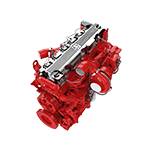2 月 . 14, 2025 22:13 Back to list
when to replace brake drums
The critical role that brake drums play in vehicle safety cannot be overstated. They are integral components that allow vehicles to stop smoothly and effectively. Over time, however, brake drums undergo wear and tear, which can compromise safety if not addressed timely. Identifying when to replace these components is crucial for maintaining optimal performance and ensuring road safety.
Expert Recommendations for Brake Drum Replacement - Mileage Estimates Generally, brake drums should be inspected every 12,000 miles or annually due to typical wear patterns. However, specific driving habits, like frequent heavy braking or long-haul towing, could necessitate more frequent checks. - Professional Inspection Engaging a certified brake technician is advisable because they can accurately determine drum condition using specialized tools. Technicians can conduct a thorough inspection and often spot early signs of wear that can be overlooked. - Quality Replacement Parts Using OEM or high-quality aftermarket parts ensures that replacements meet the original specifications and safety standards. Inferior replacements can lead to premature failures. - Holistic Brake System Check When replacing brake drums, it’s prudent to have the entire braking system inspected including shoes, wheel cylinders, and even the brake fluid. This comprehensive approach ensures all components work harmoniously. Trusting Reliable Sources Information from trusted automotive experts and manufacturers is vital in establishing a sound strategy for brake drum maintenance. Online automotive forums, verified manufacturer guidelines, and insights from certified technicians can provide valuable, up-to-date information. The proactive approach to brake drum replacement, supported by knowledge and timely inspections, can save drivers from potential accidents due to brake failure and costly future repairs. Prioritizing safety with regular checks enhances not only vehicle performance but also passenger peace of mind.


Expert Recommendations for Brake Drum Replacement - Mileage Estimates Generally, brake drums should be inspected every 12,000 miles or annually due to typical wear patterns. However, specific driving habits, like frequent heavy braking or long-haul towing, could necessitate more frequent checks. - Professional Inspection Engaging a certified brake technician is advisable because they can accurately determine drum condition using specialized tools. Technicians can conduct a thorough inspection and often spot early signs of wear that can be overlooked. - Quality Replacement Parts Using OEM or high-quality aftermarket parts ensures that replacements meet the original specifications and safety standards. Inferior replacements can lead to premature failures. - Holistic Brake System Check When replacing brake drums, it’s prudent to have the entire braking system inspected including shoes, wheel cylinders, and even the brake fluid. This comprehensive approach ensures all components work harmoniously. Trusting Reliable Sources Information from trusted automotive experts and manufacturers is vital in establishing a sound strategy for brake drum maintenance. Online automotive forums, verified manufacturer guidelines, and insights from certified technicians can provide valuable, up-to-date information. The proactive approach to brake drum replacement, supported by knowledge and timely inspections, can save drivers from potential accidents due to brake failure and costly future repairs. Prioritizing safety with regular checks enhances not only vehicle performance but also passenger peace of mind.
Latest news
-
Brake Drum for Kamaz Trucks Durable OEM Replacement & High Performance
NewsMay.30,2025
-
Brake Drum Man High-Quality Drum Brake & Shoe Solutions
NewsMay.30,2025
-
High-Performance Brake Drum for Kamaz Trucks Durable Drum Brake Components
NewsMay.29,2025
-
Brake Drum Man High-Quality Drum Brake Drums & Brake Shoes
NewsMay.29,2025
-
Brake Drum MAZ High-Performance & Durable Replacement Parts
NewsMay.29,2025
-
heavy truck brake drums
NewsMar.07,2025
